The Modulus operator defines the remainder operation that returns the remainder resulting from dividing two specified Decimal values It enables code such as the following The sign of the value returned by the remainder operation depends on the sign of dividend If dividend is positive, the remainder operation returns a positive result; · In this tutorial we will go over how do you turn a negative value into a positive value?They act the same when the numbers are positive but much differently when the numbers are negative In Java, we can use MathfloorMod () to describe a modulo (or modulus) operation and % operator for the remainder operation rem & divisor rem & divisor mod & divisor mod & divisor

Modulo Negative Numbers Stack Overflow
Java mod operator negative number
Java mod operator negative number- · In this video, finding mod value for negative numbers is discussedThis will be useful in cryptography Also, % operator in programming is explained with exaJava > Logic1 > old35 (CodingBat Solution) Problem Return true if the given nonnegative number is a multiple of 3 or 5, but not both Use the % "mod" operator see Introduction to Mod old35(3) → true old35(10) → true old35(15) → false Solution




3 Examples To Learn Excel Mod Function To Get Remainder
· The '%' operator requires two operands The first is the number on which the operator will be applied upon and the second is the divisor The result should be the remainder that would remain if we had divided the first number by the divisor An example usage of the operator in Java can be as followsYou're right, java always returns the remainder instead of modular arithmetic For negative numbers, java returns the greatest negative congruent element, and for positive numbers, java returns the smallest positive congruent element KeepNow, let's say we have the following negative int −
· The solution here is using the modulo operator with negative numbers For example, 22%12 will give us 2 and 19/12 will give us 5 As a rule of thumb, this kind of operation will always give us how many units we have left until the next multiple of our denominatorWhat is Modulo or Remainder Operator in Java Modulo operator is also known as Remainder operator and denoted by percentage sign (%) It's one of the most basic operator and very useful to create logic in programming, available in almost every single programming language As we learn in first paragraph, in Java modulus, operator can also be applied to floating point numbers eg 30%10 is perfectly legal in JavaThe javamathBigIntegermod(BigInteger m) returns a BigInteger whose value is (this mod m) This method differs from remainder in that it always returns a nonnegative BigInteger This method differs from remainder in that it always returns a nonnegative BigInteger
· Objective Write Given two integers 'number' and 'divisor', Write an algorithm to find the remainder if 'number' is divided by 'divisor' Condition You are not allowed to use modulo or % operator Example num = 10, divisor = 4 remainder = 2 num = 11, divisor = 2 remainder = 1 This is fun puzzle which is asked in the interview · The modulo operator is based on the same equations, but it uses Mathfloor () to compute quotients If both dividend and divisor are positive, the modulo operator produces the same results as the remainder operator (example 3) If, however, dividend and divisor have different signs, then the results are different (example 4) · Given the basic framework, it's straightforward to extend the calculator Add the modulus (%) operator and provisions for negative numbers /* Adding the Modulus operator and provision for negative numbers * Program is given the input in a single and and it print the output upon * getting a \n character




Mod Division In Java Vertex Academy




Intro To Negative Numbers Video Khan Academy
Standard Pascal and ALGOL 68, for example, give a positive remainder (or 0) even for negative divisors, and some programming languages, such as C90, leave it to the implementation when either of n or a is negative (see the table under § In programming languages for details) a modulo 0 is undefined in most systems, although some do define it as aMOD Syntax Description of the illustration modgif Purpose MOD returns the remainder of n2 divided by n1Returns n2 if n1 is 0 This function takes as arguments any numeric datatype or any nonnumeric datatype that can be implicitly converted to a numeric datatype · The mod of a negative number is the negative of the mod of the same positive number Mod to a negative base returns the same value as mod to the positive base The first point means that you can't expect the result of "mod n" to be in the range "0 (n1)" for all numbers If you do need a mod that behaves that way, you can use something like




Modulo Negative Numbers Stack Overflow




How To Convert Negative Number Into Positive Top 7 Methods In Excel
Fmod, std fmodf, std fmodl 13) Computes the floatingpoint remainder of the division operation x/y 4) A set of overloads or a function template for all combinations of arguments of arithmetic type not covered by (13) If any argument has integral type, it is cast to double If any other argument is long double, then the return type is · Modulo or Remainder Operator in Java Modulo or Remainder Operator returns the remainder of the two numbers after division If you are provided with two numbers, say A and B, A is the dividend and B is the divisor, A mod B is there a remainder of the division of A and B Modulo operator is an arithmetical operator which is denoted by %Now, let us convert it to negative − int negativeVal = (~ (positiveVal 1));




Intro To C Tutorial 4 Arithmetic And Logical Expressions Ppt Download




Java Modulo Operator Modulus Operator In Java Journaldev
When we enter a number, it first checks the number is positive or negative If the number is negative, it converts the number into positive by multiplying 1 After that, it performs the same steps (as we have performed in the above programs) to reverse a number At last, again it checks the number is negative or positive · time clock like for example calculating employees hours in and out with minutes included and seconds, it should create a negative number, so Mathabs is a really good tool, because it can actually convert the – sign to and absolute value number, plus it saves the programmer time and work · It turned out that the implementation of the modulo operator is different in Python and languages like Java In Java, the result has the sign of the dividend, but in Python, the sign is from the divisor Sometimes my dividends were negative, so the result, which is an array index, was negative and this is why I was getting




Olcreate Succeed With Math V2 1 0 Unit 5 Numbers Everywhere 5 2 9 Calculator Exploration Negative Numbers




Mod Division In Java Vertex Academy
· Java 8 Object Oriented Programming Programming To convert positive int to negative and viceversa, use the Bitwise Complement Operator Let us first initialize a positive int − int positiveVal = 0;Mod of negative number java Mod in Java produces negative numbers, The problem here is that in Python the % operator returns the modulus and in Java it returns the remainder These functions give the same Since Java 8 you can use the MathfloorMod() method MathfloorMod(1, 2);Simple method is to multiply negative number with Minus One to Convert a Positive Number In this tutorial we will go over Mathabs() function to achieve the same By converting we will get Absolute value Here is a java program




3 Examples To Learn Excel Mod Function To Get Remainder




Lex Program To Identify And Count Positive And Negative Numbers Geeksforgeeks
Math Tech How Python's Modulo Operator Really Works The modulo operator, denoted by the % sign, is commonly known as a function of form (dividend) % (divisor) that simply spits out the division's remainder When both the dividend and divisor are positive integers, the result is simply the positive remainder · Both remainder and modulo are two similar operations; · Modulus operator with negative numbers If we have negative numbers, the result will be based on the left operand's sign, if the left operand is positive – the result will be positive, and if the left operand is negative – the result will be negative




Conditionals And Loops




Modulo Of Negative Numbers
Modulo (%) Operator on Negative Numbers in Python Watch later Share Copy link Info Shopping Tap to unmute If playback doesn't begin shortly, try restarting your device Up next in 8 · In Java, the sign of the remainder follows the dividend, not the divisor as you would expect % can produce a negative result even with a positive divisor Be especially careful when corralling random numbers into a smaller range with the modulus operator, eg wheel nextInt % 3 will give you numbers 2 2 not 0 2 as most would expectIt is one of the things where Java and Python are fundamentally different In Java, modulo (dividend % divisor 12 % 5 in our case) operation works as follows 1 Calculate a number divisible by 5 and "greater" than 12 (10 in this case) 2




E X 3 Affine Cipher An Affine Cipher Is An Ol Chegg Com




C Program To Check Whether A Number Is Positive Or Negative Or Zero Geeksforgeeks
Java Remainder (modulo) operator with negative numbers The sign of the first operand decides the sign of the result x % y always equals x % y You can think of the sign of the second operand as being ignored Here's a diagram of x % 5 (which is the same as x % 5 )In Python and generally speaking, the modulo (or modulus) is referred to the remainder from the division of the first argument to the second The symbol used to get the modulo is percentage mark ie '%' In Python, the modulo '%' operator works as follows The numbers are first converted in the common typeAnother way to see this is to take $11$ and keep adding $7$ to it until you get a positive number This works because, if you're working modulo $7$, then adding $7$ is the same as not changing the number (modulo $7$) So $11 7 \equiv 11 \pmod 7$, and $11 7 = 4$ Therefore $4 \equiv 11 \pmod 7$ Well, we're still negative Let's do it again




The Modulo Operator Unplugged Cs Unplugged




Mod Division In Java Vertex Academy
//== 1 Note If the modulovalue (here 2 ) is negative, all output values will be negative too · Check if a number is even or odd without using modulo or division operators – Using Bitwise operator We can use the Bitwise AND & operator to determine whether the given number is even or odd Before getting into that lets get to know some basics about how bitwise operator works Bitwise operators Java Bitwise operators works 1 bit at a timeWhich yields the result i = 15, j = by the following logic i = 8 is binary Shift it 4 is the same as shift it 28




The Modulo Operation On Negative Numbers In Python Stack Overflow




Tutorial Modulo Positive Modulo Negative Revised Youtube
Modulus Operator with negative integers When modulus operator is used with negative integers, the output retains the sign of the dividend jshell> 10 % 3 $66 ==> 1 jshell> 10 % 3 $67 ==> 1 jshell> 10 % 3 $68 ==> 1 Java Modulo Operator ExamplesThink of it like moving a hand around a clock, where every time we get a multiple of N, we're back at 0 So, take mod 3 (in C and Python, it's n % 3) Starting · The JavaScript %(modulo) operator is nothing but the remainder operator, that's why it gives negative results on negative numbers Numberprototype The prototype constructor allows adding new properties and methods to JavaScript numbers such that all numbers get this property and can access method by default



1




Math Mod Java Java Modulus Negative
Using this rule, the evaluated result is negative if both operands are negative By the way, there is no absolute value operator in Java I just needed to pretend it existed to explain the mod operator As I mentioned earlier, most programmers never use negative operands with the mod operatorGiven two nonnegative int values, return true if they have the same last digit, such as with 27 and 57 Note that the % "mod" operator computes remainders, so 17 % 10 is 7 lastDigitjavaJava Modulo Operator Examples Dot Net Perls Java Modulo Operator Examples Use the modulo operator to compute remainders in division Loop and compute a simple hash code dot net perls Modulo In programs we often use the modulo division operator to compute remainders A "%" performs modulo division It returns the part left over when the



Numbers In Ruby Ruby Study Notes Best Ruby Guide Ruby Tutorial



Proposal New Operator For Positive Result Modulus Operations Issue 1408 Dotnet Csharplang Github




Modular Addition And Subtraction Article Khan Academy




Modulo Operation Wikipedia




How To Do Math In Javascript With Operators Digitalocean



Search Q Mod Division Tbm Isch




011 Using Operators And Modulus Division In Java Youtube



1




Representation Of Negative Binary Numbers Geeksforgeeks




Types Of Java Operators Nourish Your Fundamentals Dataflair




The Remainder Operator Works On Doubles In Java The Renegade Coder



Check Whether Number Is Even Or Odd Stack Overflow




Swift Remainder Operator Javatpoint



Modulo Of Negative Numbers




The Modulo Operator Unplugged Cs Unplugged




How To Convert Negative Number Into Positive Top 7 Methods In Excel




Modulo Operation Wikipedia




Conditionals And Loops




Bitwise Operators In Python Real Python




Mod Of Negative Number How To Find Mod Of Negative Number Simple Method In Hindi Youtube




Java67 How To Reverse Digits Of An Integer In Java Without Converting To String Leetcode Solution




Python Modulus Operator Javatpoint



Operators And Variables
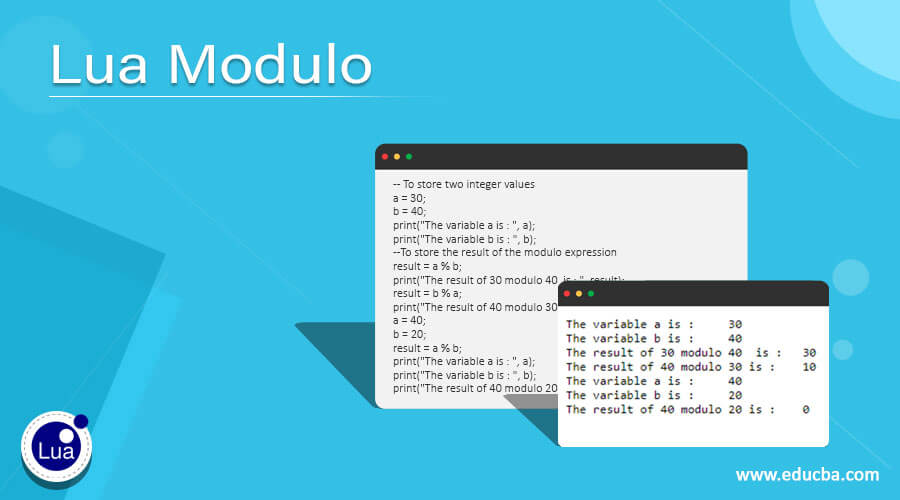



Lua Modulo Working And Examples Of Lua Modulo Operator




Modulus Of Negative Numbers In Java Programmer Sought




Mod Division In Java Vertex Academy



Python 中负数取余问题 A Quest After Perspectives



Java Basics Java Programming Tutorial



1



Modulo Of Negative Numbers




C Programming How Does The Modulus Operator Work When We Divide A Smaller Number By A Larger Number For Example 3 5 Or 5 10 Quora




Modulus Of Negative Numbers In Java Programmer Sought




Java Arithmetic And Modulus Operator




Modulo Operator Performance Impact Joseph Lust




How To Convert Negative Number Into Positive Top 7 Methods In Excel



How To Find The First Or Last Positive Or Negative Number In A Column List In Excel Free Excel Tutorial



What Is The Result Of In Python Stack Overflow




What Is The Result Of In Python Stack Overflow




Representation Of Negative Binary Numbers Geeksforgeeks



How To Find The Second Last Digit In A Number Using Java Quora




Find Subarray With Maximum Sum In An Array Of Positive And Negative Number Code Example




Modulo Operation With Negative Numbers In Python Better Programming




Numbers In Python Real Python



Java Modulo Example




Mod Division In Java Vertex Academy



Java Operator Modulus Operator



Java Ieeeremainder Function




Xw Dvi1scipglm




How To Convert A Negative Integer In Modular Arithmetic Cryptography Lesson 4 Youtube




Ppt Modular Arithmetic Powerpoint Presentation Free Download Id




What S The Syntax For Mod In Java Stack Overflow




Arithmetic Shift Wikipedia



Java Biginteger Mod Method Example



How Does The Modulus Operator Works Quora



Modulo Operator Performance Impact Joseph Lust




Java Modulus Youtube




The Modulo Operator Unplugged Cs Unplugged



Java Modulus Operator Modulus Operator In Java



How To Always Get A Positive Modulo Remainder By Thomas Poignant Medium




Java67 Modulo Or Remainder Operator In Java



Modulo Calculator Mod Examples



How Modulo Works In Python Explained With 6 Examples




Oracle Remainder And Mod Function Guide Faq And Examples Database Star




Negative Base Wikipedia



Java Basics Java Programming Tutorial




Mod Division In Java Vertex Academy




Mod With Negative Numbers Gives A Negative Result In Java And C Stack Overflow




Introduction To Mod Code



Java Arithmetic And Modulus Operator




Sort Array With Negative Numbers Code Example




How Does The Modulo Operation Work With Negative Numbers And Why Quora




How To Convert Negative Number Into Positive Top 7 Methods In Excel




Check If A Given Number Is Sparse Or Not Geeksforgeeks



Modulo Problem In Java Dreamix Group



Program For Factorial Of A Number Geeksforgeeks



Java Remainder Modulo Operator With Negative Numbers Programming Guide



How To Use Modulus In Java




Is Not Modulo Dev Community




Modulus Of Negative Numbers In Java Programmer Sought




Finding The Modulus Of A Negative Number Youtube



Python S Modulo Operator And Floor Division




Java Modulus Operator Remainder Of Division Java Tutorial



Python Remainder Operator 8 Examples Of Pyhton Remainder Operator




Solved For This Project You Are Going To Write A Program Chegg Com



0 件のコメント:
コメントを投稿